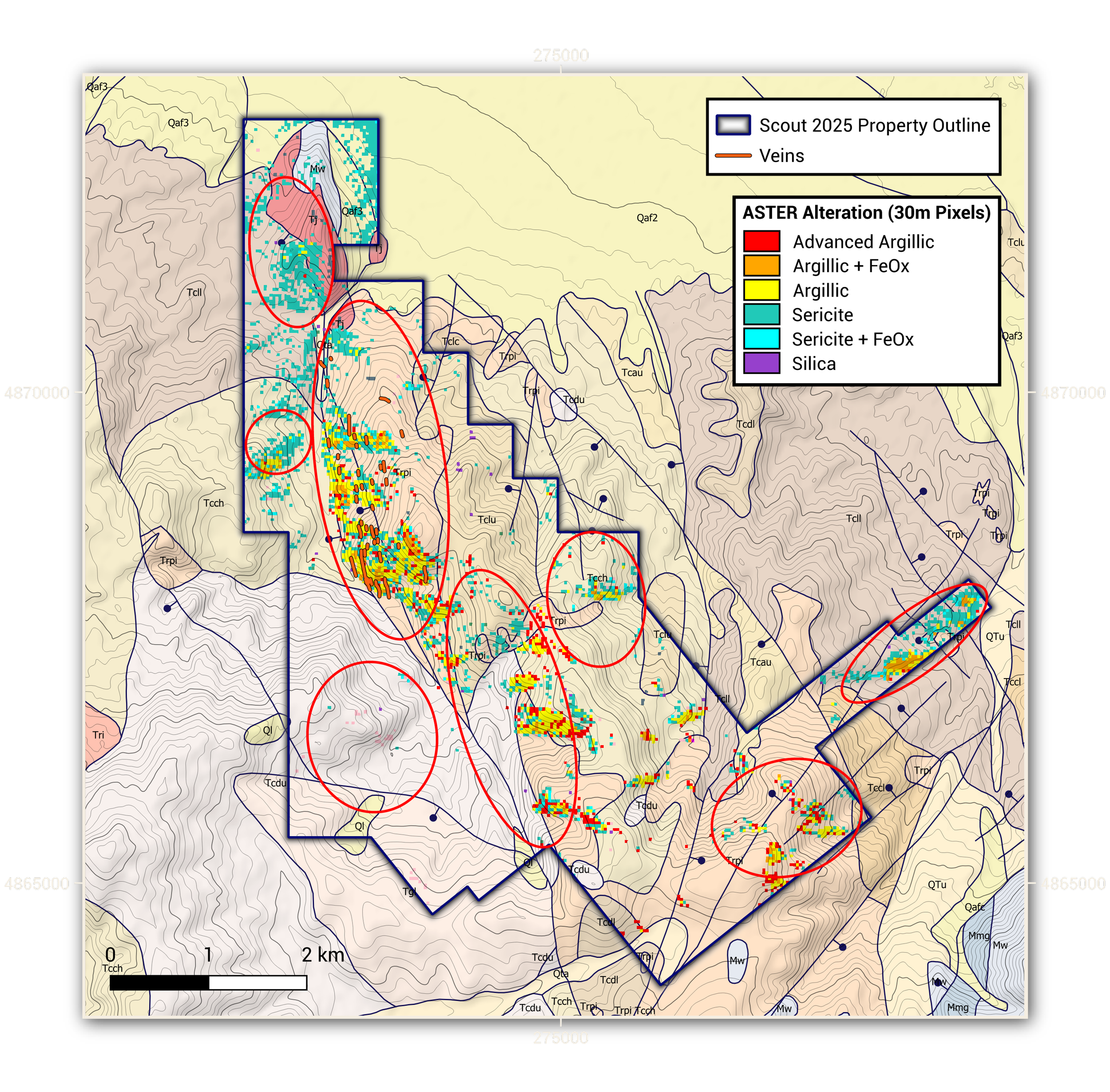Lehman Butte - Low-Sulfidation Epithermal Au-Ag
Opportunity – District-scale epithermal gold-silver project with permitted and drill-ready targets represents a significant opportunity for exploration and potential resource expansion.
Overview:
Lehman Butte is a highly prospective epithermal gold-silver project in central Idaho, characterized by clay-adularia alteration, quartz-FeOx breccias, and a central banded quartz-adularia vein system within Eocene tuffs and lavas.
With extensive alteration and mineralization, a well-defined vein system, and the potential for Carlin-style mineralization at depth, the project offers significant upside potential for discovering high-grade gold and silver deposits. Continued exploration and targeted drilling programs will be key to unlocking the project's value and advancing it toward development and production.
Regional Geology
The regional geological setting is rich in volcanic and magmatic activity, with a preserved graben structure dating back to the Challis volcanic and volcaniclastic sequence around 45 million years ago. This sequence is within a region affected by significant tectonic events, including fold-thrust belts associated with the Antler and Sevier/Laramide orogenies.
The extensional setting since the early Eocene, particularly the high-magnitude extension from the late Eocene onwards, likely played a crucial role in shaping the area's geological features. The presence of voluminous high-K arc magmatism from 50-45 million years ago, known as the Challis magmatic episode, suggests intense volcanic and plutonic activity during that period, resulting in the formation of widespread volcanic and plutonic rocks.
The preservation and exposure of the upper 1-3 kilometers of Eocene crust make the region regionally prospective for porphyry-epithermal and related deposit types. The geological conditions and mineralization processes during that time frame have created favorable conditions for the formation of economically valuable mineral deposits, particularly those associated with porphyry and epithermal systems.
Geochemistry
Rock chip sampling shows a widespread area with gold values above 0.1 g/t, and up to 3.1 g/t associated with intense veining, suggesting a potentially significant mineralized zone. The presence of silver along with other pathfinder elements like arsenic, antimony, and mercury further supports the potential for precious metal mineralization.
Systematic soil sampling confirms the presence of a strong gold anomaly coincident with the rock chip anomalies and reinforces the significance of the mineralization. The correlation of silver with gold and the presence of arsenic and antimony anomalies in the soil further validate the potential for valuable mineralization in the area.
The consistently low base metal contents in the rock chip samples suggest that the mineralization is likely epithermal in nature and preserved at shallow levels. This information could be valuable for further targeting exploration efforts.
Targets
Bulk tonnage gold mineralization in permeable lapilli tuffs beneath welded tuff, as seen in places like Round Mountain, indicates potential for significant gold deposits. These formations can create favorable conditions for gold to accumulate over time.
Major soil and rock chip anomalies associated with strong veining and alteration further suggest the presence of mineralization.
High-grade, underground mineable banded quartz-adularia veins, as seen in operations like Hishikari, can host substantial gold concentrations. The veins' width of up to 2.5 meters suggests a potentially economically viable target.
Targeting the Eocene unconformity adds another layer of geological complexity. Unconformities can create structural traps for mineralization, enhancing the potential for significant gold deposits.
Project Geology
The project area is situated on a sequence of Eocene lavas, flow-dome complexes, and various types of tuffs. These formations are underlain by Mississippian limestone.
There is a NW to N-S trending normal fault system present, possibly with secondary structures oriented NW. This faulting system has likely undergone multiple generations of activity, resulting in offset and juxtaposition of vein systems. Some of these features may be concealed by post-mineral volcanic units in certain areas.
The primary focus of interest lies within a thick sequence (>300m) of non-welded lapilli tuffs located beneath a strongly welded upper tuff unit. This area exhibits significant alteration and veining, indicating potential mineralization or hydrothermal activity.








